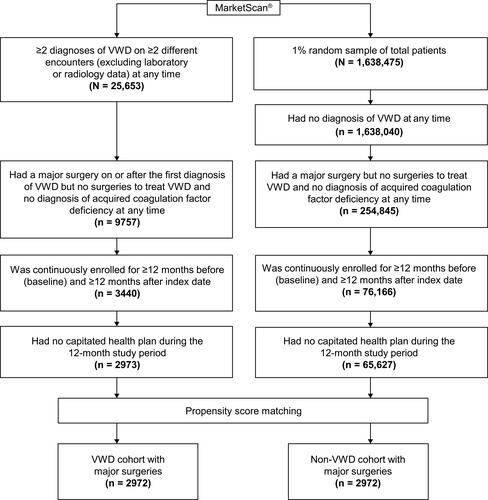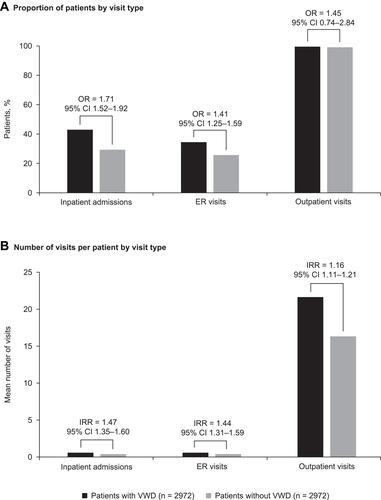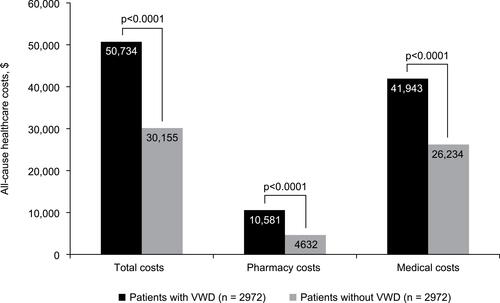Figures & data
Figure 1 Patient selection for the VWD and non-VWD study cohorts with major surgeries.

Table 1 Baseline Demographic and Clinical Characteristics of the VWD and Non-VWD Cohorts
Figure 2 Comparison of all-cause HCRU in the 12-month observation period between matched cohorts of patients with and without VWD who had major surgery, showing (A) proportion of patients by visit type and (B) number of visits per patient by visit type.

Figure 3 Comparison of adjusted healthcare costs in the 12-month observation period between matched cohorts of patients with and without VWD who had major surgery.

